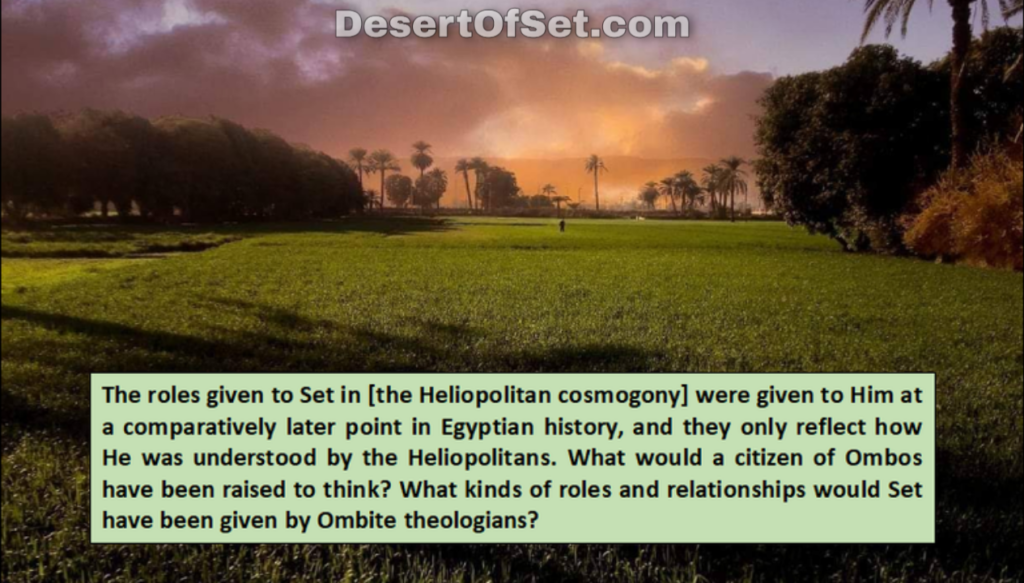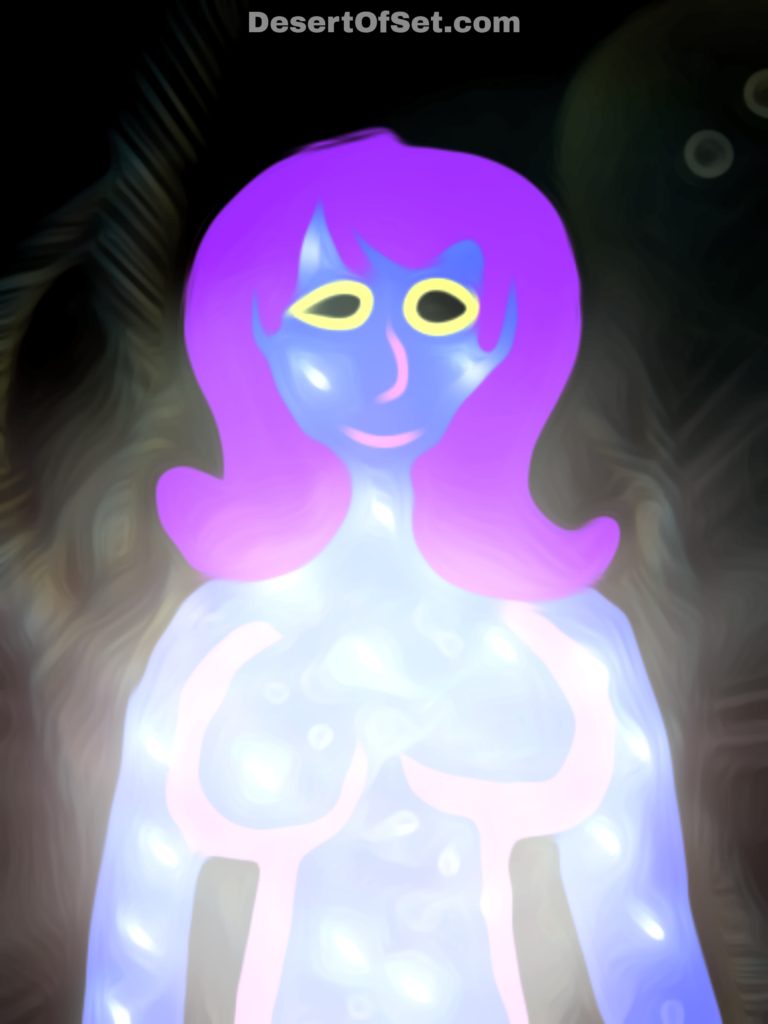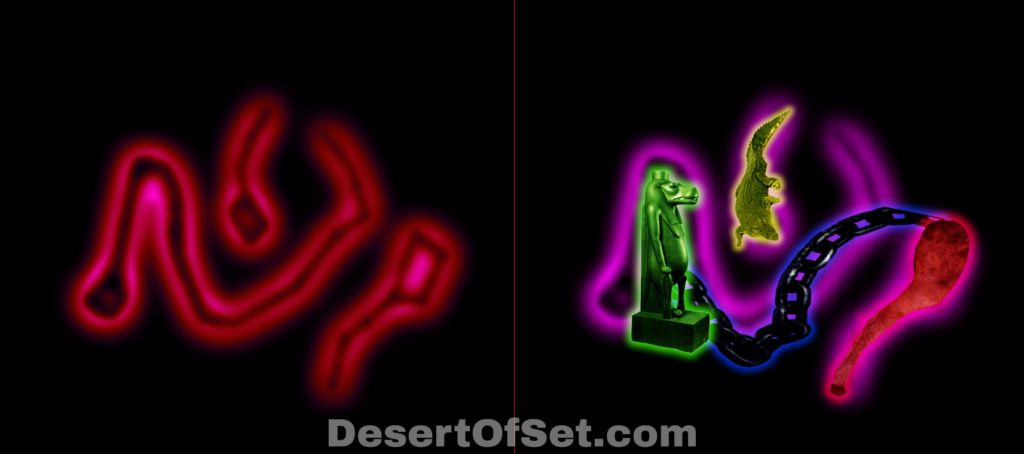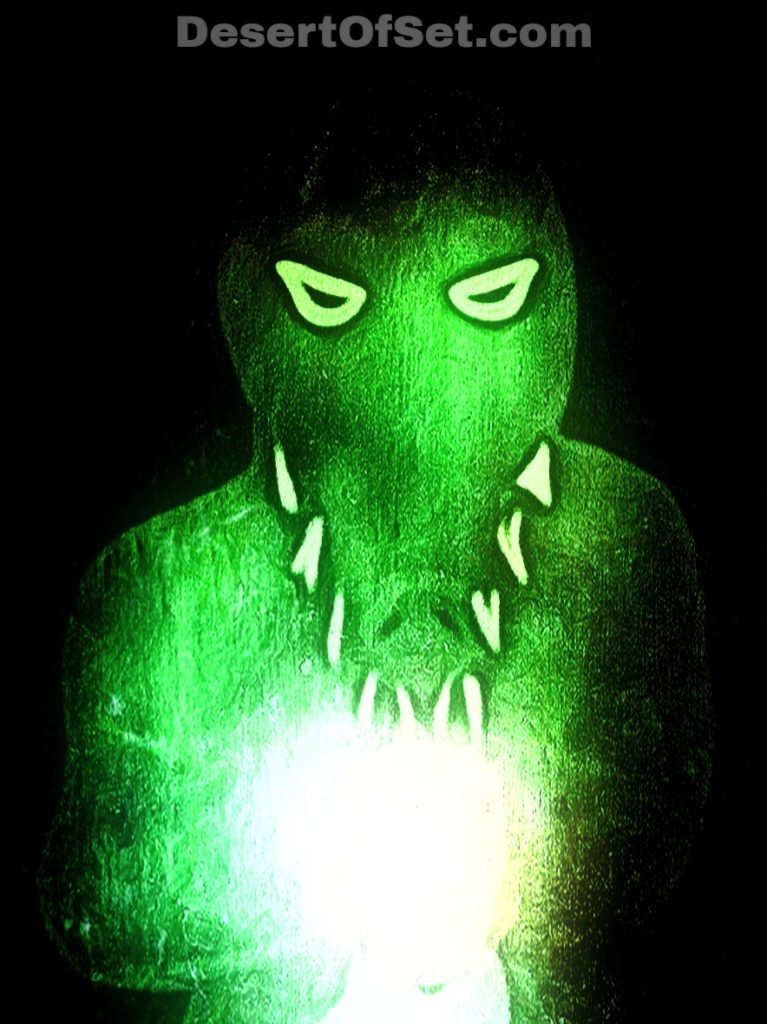My attempt at writing a Setian Creation myth that someone living in the ancient city of Nubt (Ombos or Naqada) might have believed.

People are often surprised to learn that the Egyptians developed more than one Creation myth. Each priesthood had its own ideas of how the universe was created, and of who created it. They each considered the divinities they were separately assigned to worship as supreme. Hence why the priesthood of Iunu or Heliopolis taught that Atum-Ra created the universe by ejaculating it from themself, while the priesthood of Khmun or Hermopolis thought it all began with a convergence of the Ogdoad (i.e., eight primordial Gods). The priests of Mennefer or Memphis believed Ptah created the world by commanding it to exist, while the priests of Waset or Thebes were convinced that Amun was the Creator. These are the four most popular schools of thought when it comes to Egyptian theology.
There were far more cosmogonies in Egyptian religion than just these four, however. There is one in which the Goddess Neith gives birth to the universe, while another cites Geb (Father Earth) as the demiurge. There is even a version of events where Sobek, the crocodile God, gives birth to the sun. If you’re wondering how the Egyptians could have tolerated having so many different Creation myths, it’s because they conceptualized religion very differently than we do today. As far as they were considered, each of these stories is simultaneously true; they are simply different ways of telling the same tale. In this way, it’s almost as if the Egyptians predicated the “many worlds” interpretation of quantum mechanics.
Set’s worship goes all the way back to the predynastic era (to 3200 BCE at least, when our northern pole star was still Thuban in the constellation Draco). This means Set was worshiped in Egypt long before the Pharaohs came along. His cult appears to have originally been centered in an Upper Egyptian gold-mining town called Nubt, which is also known as Ombos in Greek and Naqada in Arabic. The people of Nubt had a temple that was dedicated to Set, and it stands to reason that this temple would have been maintained by a priesthood. It also stands to reason that the members of this sect would have had their own ideas of how Creation occurred, and that Set would have played a central role in this ideology. Unfortunately, there are no written records to indicate what such a cosmogony might have been like; the temple of Set in Nubt no longer stands, and whatever secrets it once held are now lost to us forever.
I don’t claim to know who really created the universe or how, and I actually don’t care about this question all that much. It’s enough for me to put my trust in Set, and to enjoy and give thanks for His blessings. Yet it has always bugged me a little how the only Egyptian Creation story you ever seem to hear about is the Heliopolitan cosmogony. The roles that were assigned to Set in this schematic (great-grandson to Ra; grandson to Shu and Tefnut; son to Geb and Nut; brother to Osiris, Isis, and Nephthys) were given to Him at a comparatively later point in Egyptian history, and they only reflect how He was understood by the Heliopolitans. What would a citizen of Ombos have been raised to think? What kinds of roles and relationships would Set have been given by Ombite theologians?
There is really no way to answer such questions, but the following is my attempt at imagining what an Ombite Creation myth might have looked like. Please keep in mind, however, that this is not intended to be read as any kind of dogmatic scripture. This was not supernaturally revealed to me by Set, and He has never once told me anything like, “BELIEVE THIS STORY, IT’S ABSOLUTELY TRUE, OR I WILL KILL YOU.” Big Red certainly inspired me to write this, but it is really just a thought experiment, and I hope it will either be accepted, critiqued, and/or improved upon as such.
I’ve tried to make this seem like something a person living in predynastic Nubt might have actually believed; so there are no references to Horus or Osiris, given that those stories did not develop until after the unification of Egypt. Here I refer only to divinities whom we know were worshiped or at least recognized either in Ombos itself, or in some of its closest neighbors (including the cities of Abdju/Abydos, Gebtu/Coptos, and Waset/Thebes). Aside from Set, His mother Nut, and the hippo Goddess Taweret, this narrative also includes Sobek, Montu (the Theban sun God of war), Raet (a Theban sun Goddess), Min (the Coptic God of fertility and sexuality), Aset/Isis, and Khenti-Amentiu (a jackal God of the dead who was worshiped in Abydos, and who might or might not be an earlier form of Anubis, Wepwawet, or Osiris). The order in which the Gods are born is based on how their stars are arranged in the sky. Set, Taweret, and Sobek come first because the Great Bear, Draco, and the Little Dipper are in the celestial north; Montu and Raet are next since the Zodiac is beneath these constellations; and Min and Aset follow since Orion and Sirius are beneath the Zodiac. With all that being said, I now humbly submit the following.
Before the Dawn of Time, there was nothing else but the Goddess Nut. She was alone, and her infinite black body was not yet tattooed with stars. Everything which now exists was still one with Nut, and since there was nothing else with which she could be compared, everything was nothing. All was Nut, and Nut was all.

But then a powerful hunger awoke within the body of the Goddess, a craving for existence rather than nothingness. So powerful was this force that it grew and grew within Nut until it could no longer be contained. This new force then exploded from Nut’s side, cleaving her in twain and becoming the Red God, Set. In this way, the Dawn of Time began not with the first dawn (as the priests of Atum teach their children in Iunu), but with the first storm.

One part of Nut descended and became her brother Geb, upon whose body we now live. The other half remained above and became Mother Sky. Set was still attached to Nut by His navel string, but He cut the string with His iron phallus and was freed. He then roamed the body of Geb, spreading desolation and dust wherever He went. His navel string did not fade away, but became angry and attacked the Red God. Thus did the evil thing become Apep, the Chaos Serpent, which seeks to return all of Nut’s children to her womb and make her miscarry for all time.

Apep eventually attacked Set and castrated Him with its horrible teeth. The Red God roared in pain, but would not be defeated; He merely retrieved His iron phallus, forged it into a massive Scimitar, and hacked the Serpent into pieces. Yet did the monster regenerate itself, with all of its pieces coming back together save one. That one remaining piece grew to become the Goddess Taweret, who fell in love with Set and joined Him in battling the Serpent.

Taweret also restrained Set by chaining His Scimitar to the navel of Nut. In this way, Taweret established Ma’at and made it possible for life to develop upon the body of Geb. She and Set then became the Great Hippopotamus (Draco) and the Foreleg (Ursa Major) in the northern sky. Such is how the Red God was tamed to become the defender of our world. His war against Apep will rage for all time; were it not for Set’s grace, the Serpent would swallow us all.

Some time later, Taweret made Herself pregnant and gave birth to Sobek, who appears as the Great Crocodile (Ursa Minor) in heaven. Sobek descended to Geb and created Iteru (the Nile), the first river; then he laid a gigantic egg in what is now Waset. When this egg hatched, the sun deities Montu and Raet came forth. Then, in what is now Gebtu, Montu and Raet brought forth Min and Aset. Together, these four divinities created all life upon the body of Geb. Finally, Min and Aset gave birth to Khenti-Amentiu, who guides the dead to safety in Duat.

The people of Waset praise Montu as the Creator, and the people of Gebtu praise Min. But we who live here in Nubt know that Set is the One who truly started it all. Our humble little town is where He first stepped foot on Geb. He has blessed our people with the gold that we mine from the hills, as well as with the surrounding desert that preserves our Blessed Dead. It is our sacred duty to offer food, drink, and pottery to the Red God at the House we have built for Him here; let those in other towns appease the other Netjeru.

